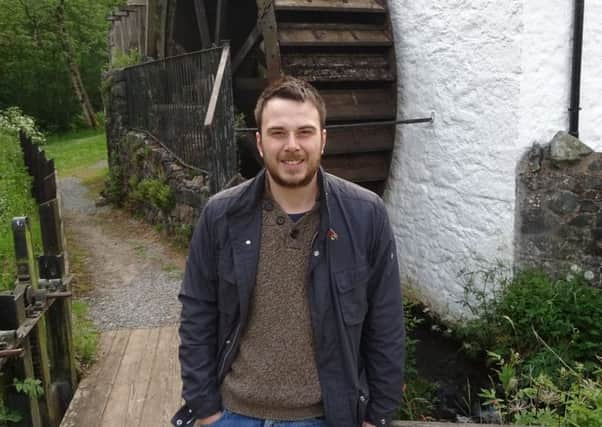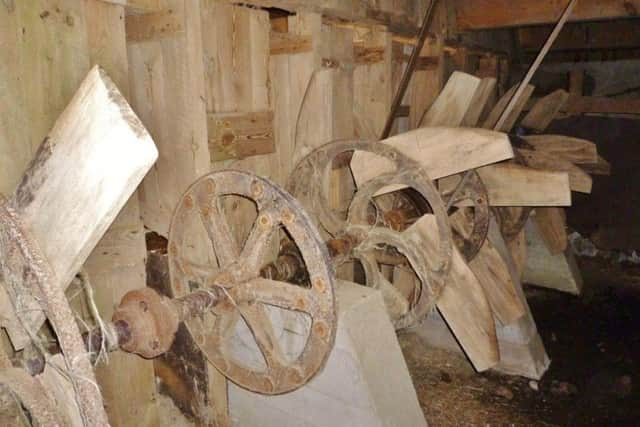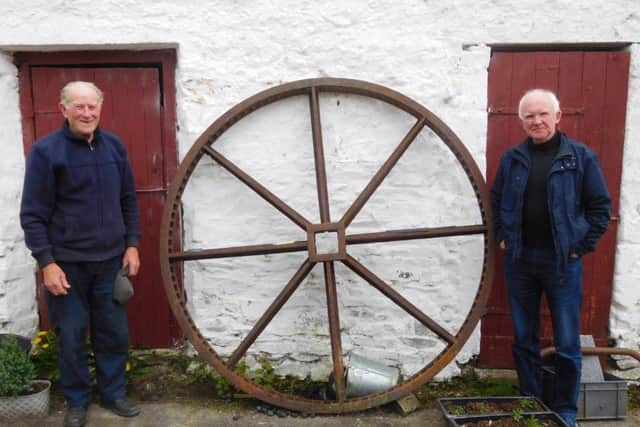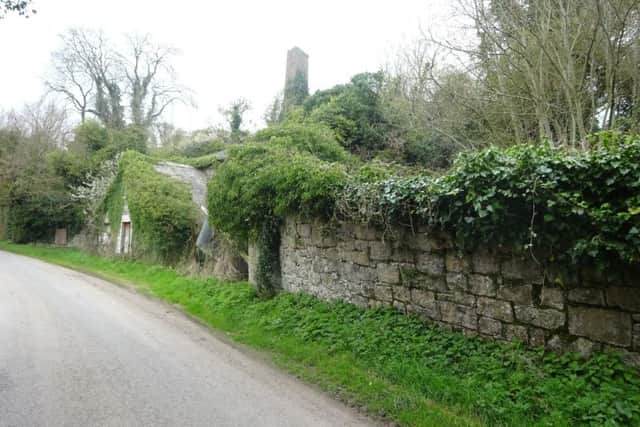On the hunt for Ulster’s scutchers


Ask most students what they get up to in their spare time and it’s highly unlikely any will tell you they’ve visited the sites of 250 abandoned flax mills in Northern Ireland over the past five years.
Unless of course you’re asking Sebastian Graham, a 27-year-old Queen’s student who is studying for a masters in history.
Advertisement
Hide AdAdvertisement
Hide AdHis dissertation feeds into his passion for uncovering the history of Ulster’s linen industry, particularly those people whose job it was to scutch flax.


Showing my ignorance, my first question to Sebastian was to explain what the job of a flax scutcher entailed: “A scutcher works in a flax mill or a scutching mill.
“He has the flax plant in his hand and he puts it through a handle that turns very, very quickly and this handle takes off the hard wooden core of the flax plant and leaves behind the soft fibre that goes on to make the linen in the larger mills.
“It was always an agricultural process, always very rural, any little townland that had a stream or water power they’d have utilised that for a scutching mill.
Advertisement
Hide AdAdvertisement
Hide Ad“I have discovered that although the process was the same, variations exist regarding certain terms such as ‘targing the tow’ and regarding the ‘lint hole or flax dam’ or as some in North Antrim say, ‘the dub’.”


Discussing his passion for the linen industry, the Cookstown man said: “I’ve always been interested in mills and the people working in them. Around five or six years ago I starting mapping out all the mills in Northern Ireland. I only finished it in January.
“I have now literally mapped out everywhere in Northern Ireland – there’s roughly about 4,100 odd mills sites and factories across Northern Ireland from the 1860s to the 1930s.
“What interests me is just the sheer amount of flax scutching mills. There’s roughly about 1,400 in 1868 that was because of the need for flax and linen production in the American civil war.
Advertisement
Hide AdAdvertisement
Hide Ad“They’d started to decline by the 1900s to 804 in 1900, then only 292 during the start of the Second World War.


“Now there are two mills in a working condition. They are at McConville’s Mill in Dromore and the other is Bennet’s Mill of Ennish outside Dungannon. There are others that have machinery intact but the vast majority of them are just stone walls essentially.
“I started doing the mills of Northern Ireland project in my own spare time. Altogether over the last five years, I’ve visited 250 sites.”
He continued: “When researching this I noticed there was nothing written about flax scutchers in any real depth. The only resources that mention scutchers are the hundreds of local history journals that there are across Ulster. I thought to myself this could be quite interesting to see how much I can understand and learn from it.”
Advertisement
Hide AdAdvertisement
Hide AdTo that end Sebastian chose to write a dissertation entitled ‘Scutchers, tow-shakers and mischief makers’ for his masters degree in history, which he started, part time, about a year and a half ago.
He said: “It’s essentially combining oral history with local history and giving an understanding of the lives of scutchers in Ulster.
“Scutchers in the 1800s were seen as down and outs who had bad drinking habits. It was once a common phrase in Cookstown to say that you were ‘as thirsty as a scutcher’, meaning you liked to have a few drinks. Whiskey and ether were the main culprits and said to make the job easier on their throats because of the dust.
“Conditions were very harsh with a lot of dust called pouse in the atmosphere. There was also the added danger of the machinery which was usually left unguarded and so it only took a slip or loose clothing for fatal accidents to occur. Despite this by the 1940s scutchers had become more respected and earning very good wages compared to other jobs.
Advertisement
Hide AdAdvertisement
Hide Ad“The aim of the dissertation is to highlight the importance that scutchers played in the rural economy and the legacy they have left behind.”
He said: “For the oral history element of this I’m trying to find flax scutchers who are still living, which is no easy task because all of them pretty much closed in 1950.
“I’ve been going to different mill sites, turning up on people’s doors and asking if they know anyone still living that would have scutched flax.
“Honestly, it surprised me, because I was always told there were no scutchers left, but I’ve been able to track down five or six so far and that’s from locations right across Ulster.
Advertisement
Hide AdAdvertisement
Hide Ad“I have been overwhelmed by the generosity of landowners, mill owners and country people for letting me see their mills and speak to them about their mill or experiences with it. It brings back so many memories of their youth that shows my generation how times have changed for better and for worse.”
Of his own family’s linen background he said: “I would have known that my grandfathers would have grown flax from Cookstown and up in the Glens of Antrim, and I know my grandmother would have worked in a weaving or spinning mill up in Belfast.
“Unfortunately I wasn’t the right age to ask her what mill it was before she died. It’s annoying because I never got the chance to ask them the questions that I’m now asking other people.”
One of the people Sebastian spoke to for his dissertion on scutchers was Eugene Malone who had worked at a mill at Kingsmill in Co Armagh.
Advertisement
Hide AdAdvertisement
Hide AdHe described the scutching season: “You started usually to scutch the flax on the first of October ... and if there was a load of flax, you’d be scutching to about March or April.
“The waste that came off the flax, it was called tow. It was all saved up.
“The mill man bought the tow off the farmers. He would keep in stacks or sheds and then he would targe it in the summer time when there would be no flax.
Eugene spoke about an accident in the mill: “I mind it yet, just a mass of blood.
Advertisement
Hide AdAdvertisement
Hide Ad“He lost that finger there, this thumb was broke in about six places and he walked up the lane into the house here and my mother got a pillowcase, clean pillowcase wrapped it round his hand until the ambulance come.
“Somebody lit his pipe and he smoked his pipe until the ambulance come. I don’t know how he stuck it.
“He didn’t know how bad it was until he got to the hospital. That finger was gone altogether and the thumb was all smashed, that finished him scutching.”